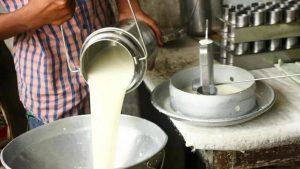
Scientists convert a traditional Asian herbal extract into a revolutionary pH-responsive sensor for real-time milk freshness monitoring.
A team of chemists at Christ University has pioneered a scientific solution to milk spoilage using a source rooted in traditional Asian plant wisdom. Researchers successfully converted an extract from Caesalpinia sappan L.—or sappan heartwood, traditionally used as a dye—into a plant-based color indicator. This innovation is poised to address a significant food safety challenge, particularly in massive dairy markets like India, which produces over 239 million tonnes of milk annually and often struggles with adequate refrigeration.
The core technology relies on the natural pigment’s sharp responsiveness to changes in pH, which is the key chemical indicator of milk spoilage. As milk loses its freshness and acidity builds due to bacterial action, the pH drops significantly. The indicator solution, created by simply boiling the heartwood in water, visibly shifts color: from a bright orange-red in fresh milk (pH $\approx$ 7.0) to orange, and finally to a distinct yellow in spoiled samples (pH $\approx$ 3.5).
The active compound driving this color transformation is brazilein, a natural pigment valued for its medicinal and dyeing properties. Crucially for agribusiness applications, the researchers note that brazilein is stable under light and heat, making the indicator highly suitable for real-world integration. This stability is essential for use in intelligent packaging that could provide a constant, real-time visual alert to consumers and supply chain managers.
Perhaps the most impactful aspect of the discovery for the international dairy sector is the ease of use. The team demonstrated that the subtle color changes can be accurately monitored and analyzed using nothing more than a standard smartphone camera. Digital images are processed via RGB analysis, with the “green chromatic shift” serving as a reliable, quantitative measure of freshness deterioration. This innovation eliminates the need for expensive laboratory tools or trained personnel.
By blending traditional plant chemistry with accessible digital tools, the Christ University researchers have created a sustainable, non-toxic, and economically viable milk freshness sensor. The research, which has been published in the journal Food Analytical Methods and is currently the subject of an Indian patent application, represents a major step forward in leveraging natural resources to enhance food safety and drastically reduce waste across the global dairy supply chain.
Source: Find the complete details on this agribusiness innovation in the original article from Times of India.
You can now read the most important #news on #eDairyNews #Whatsapp channels!!!
🇮🇳 eDairy News ÍNDIA: https://whatsapp.com/channel/0029VaPidCcGpLHImBQk6x1F

















